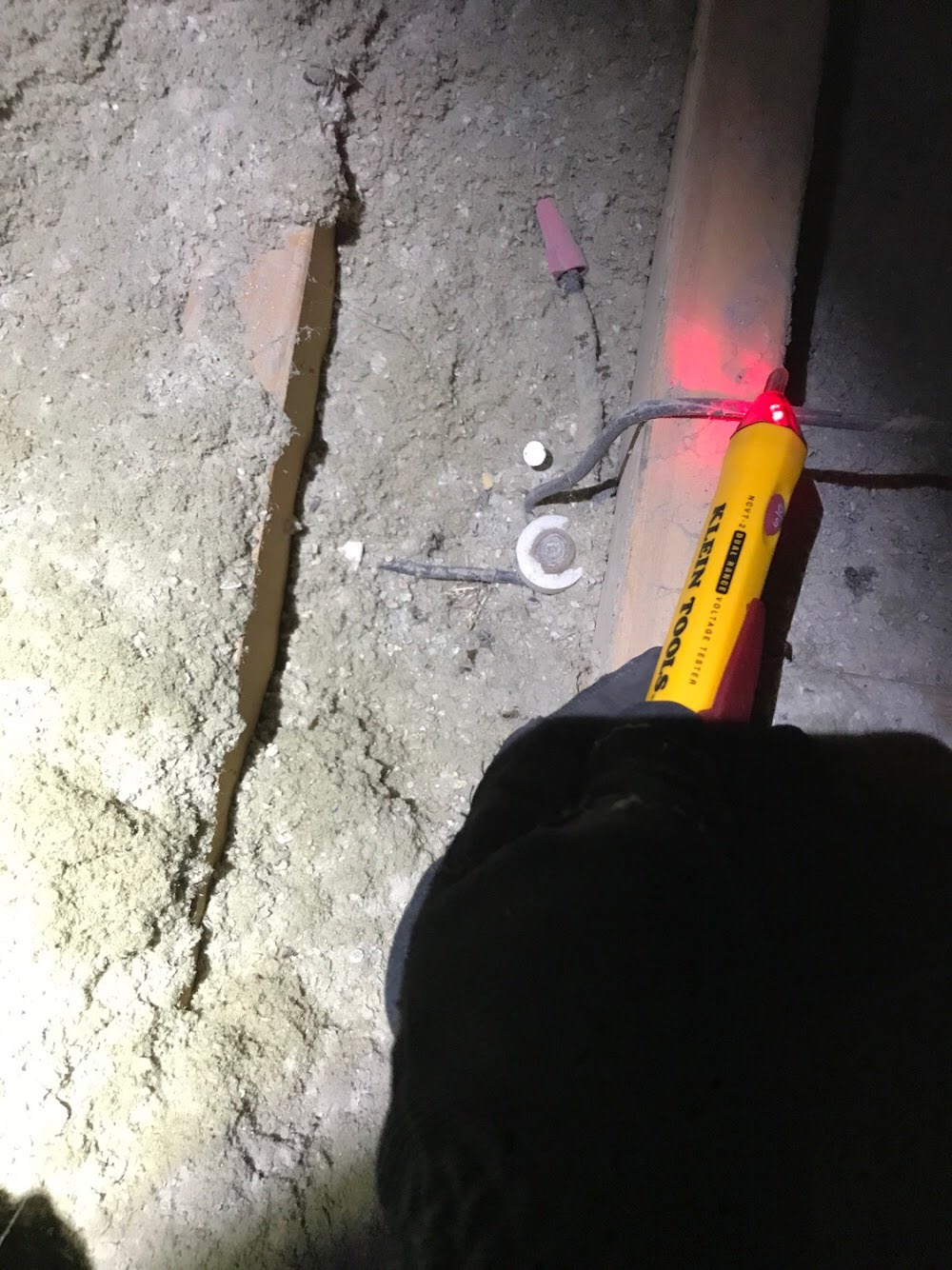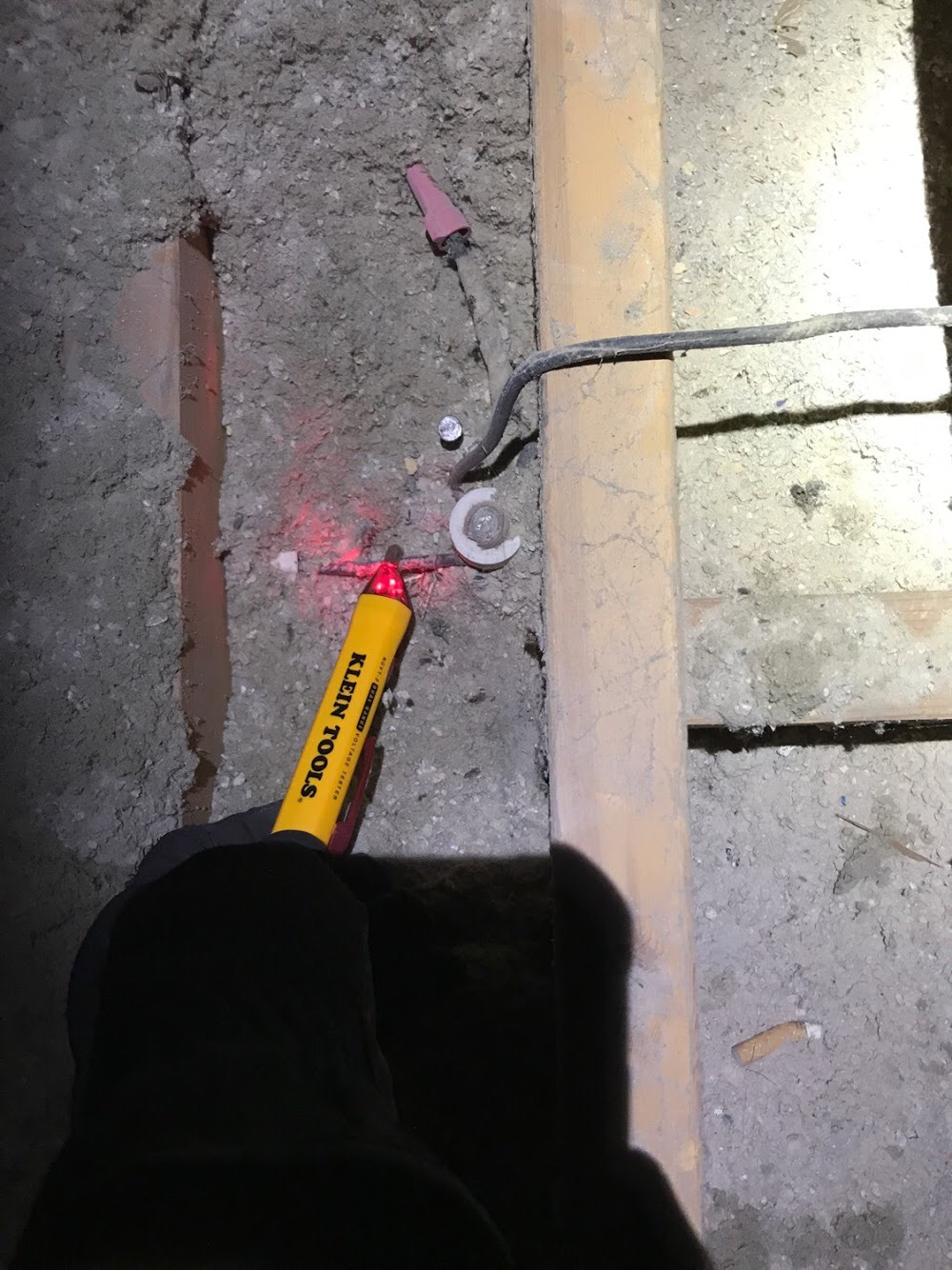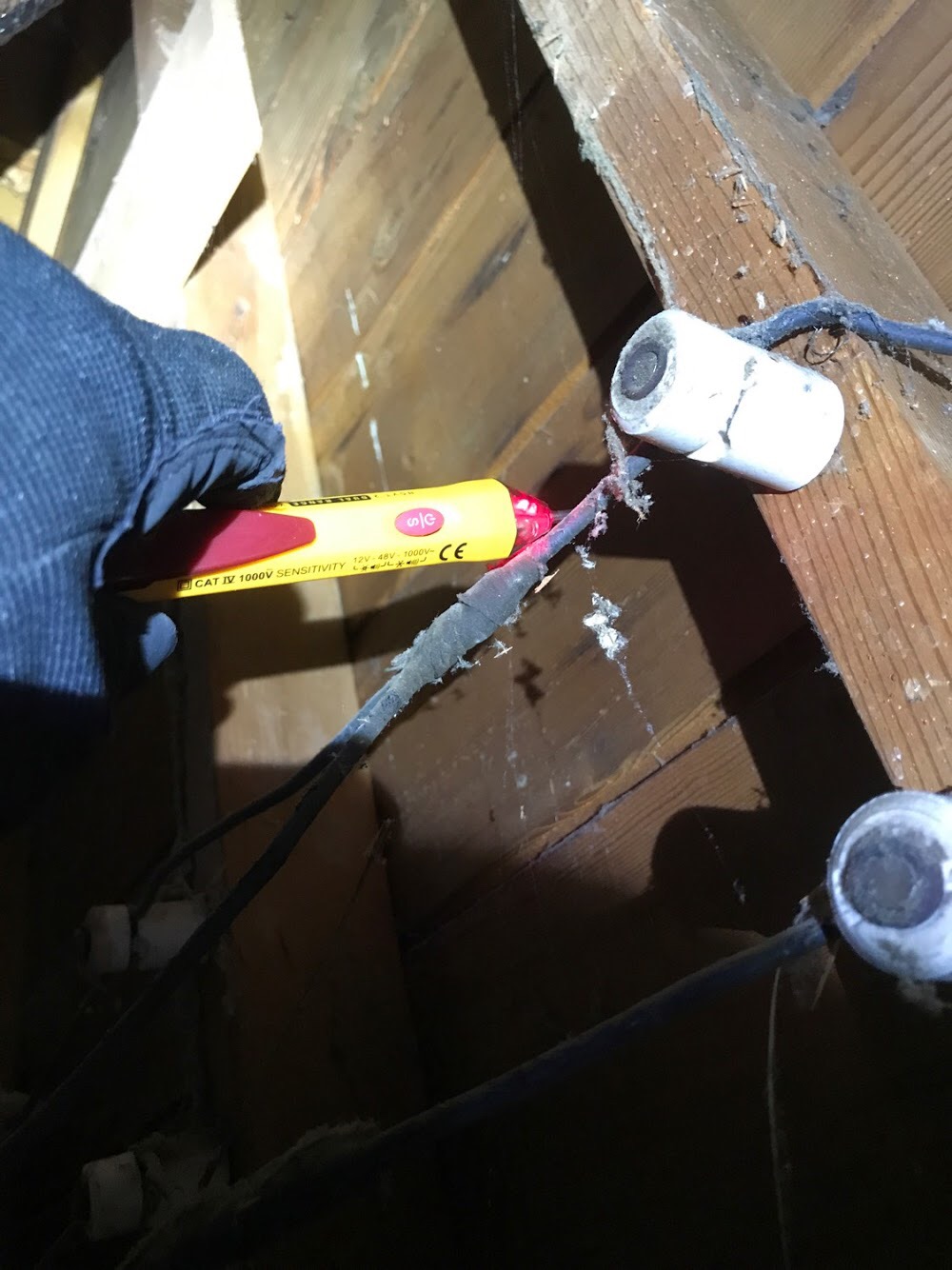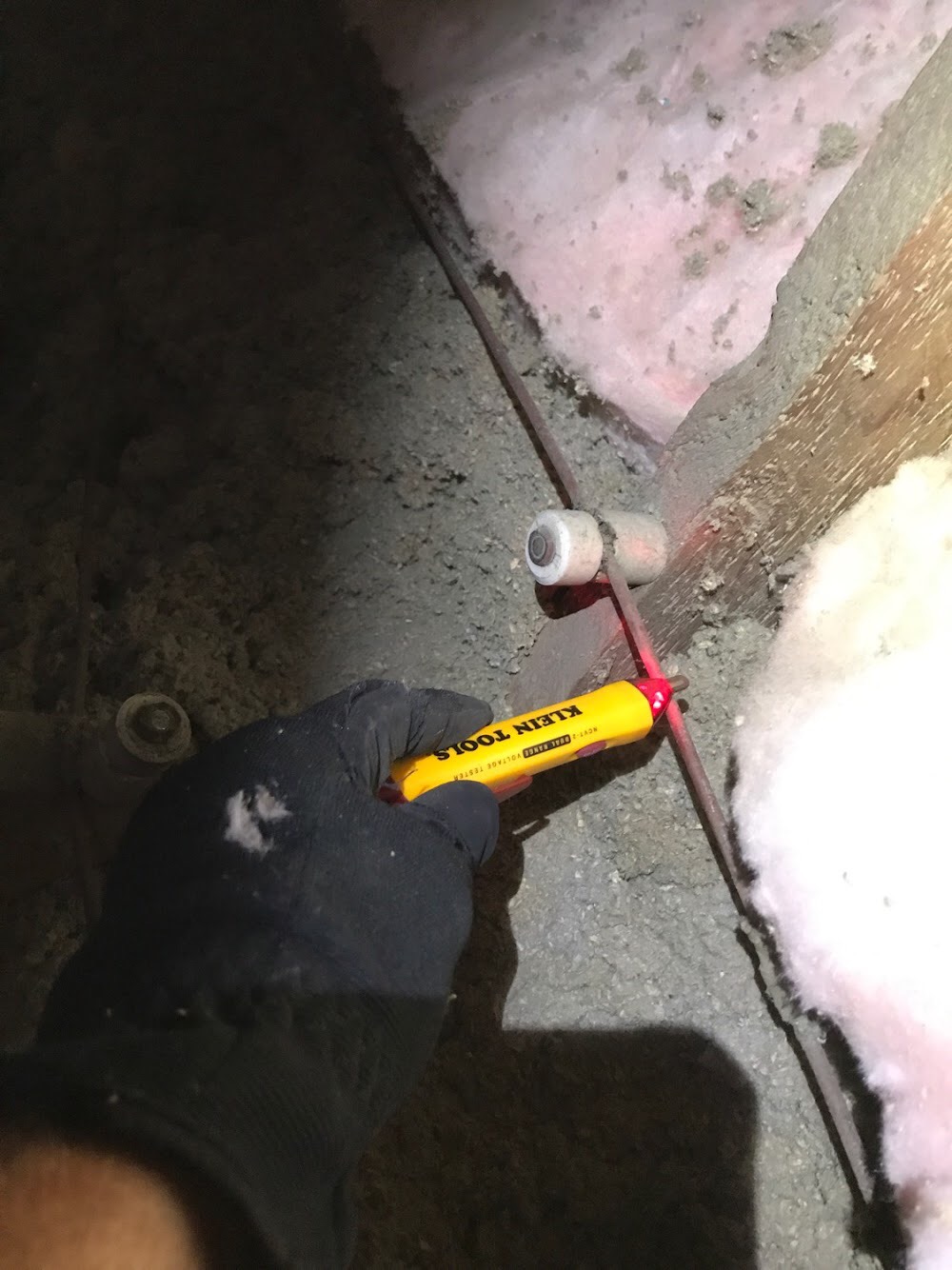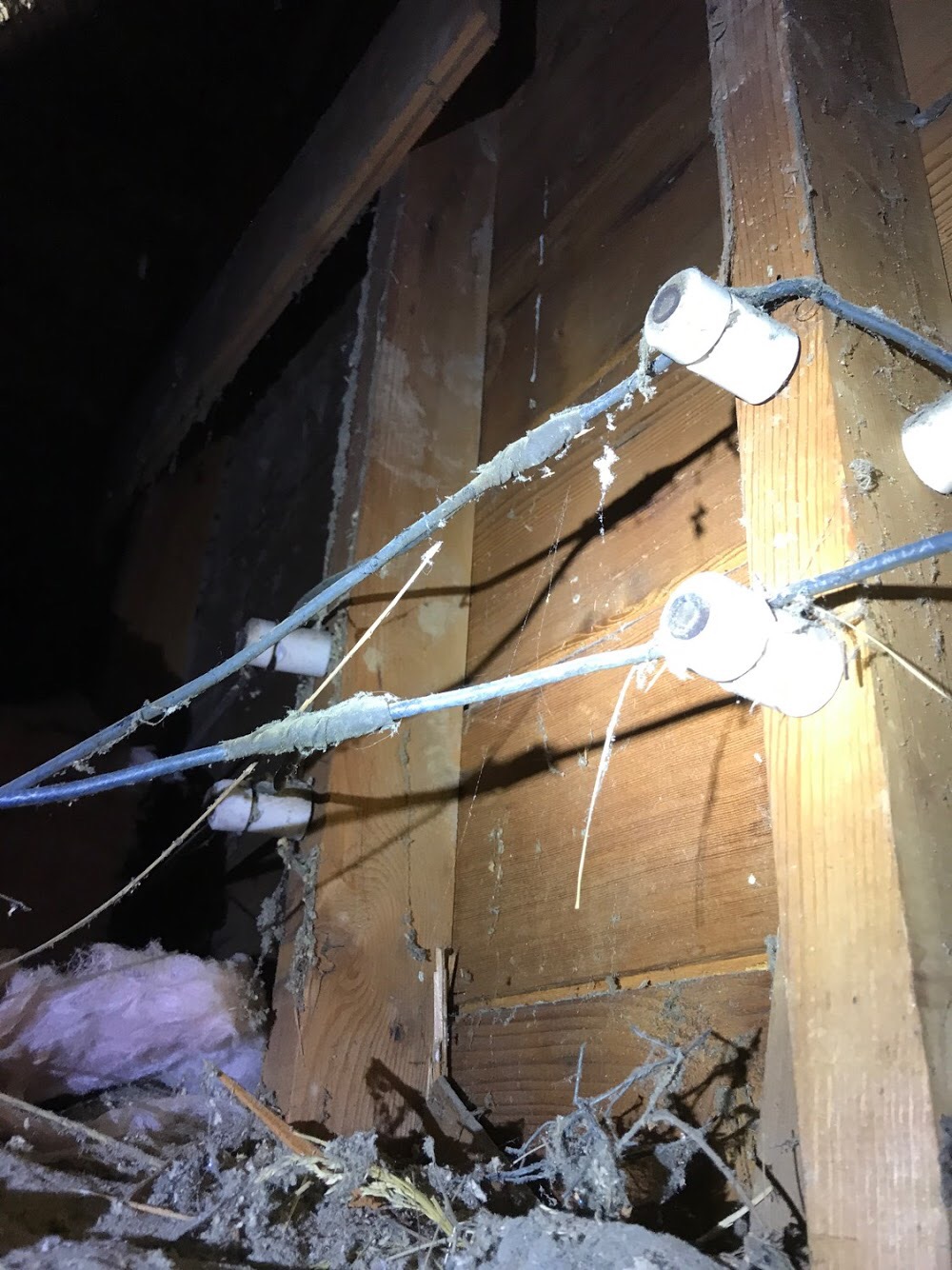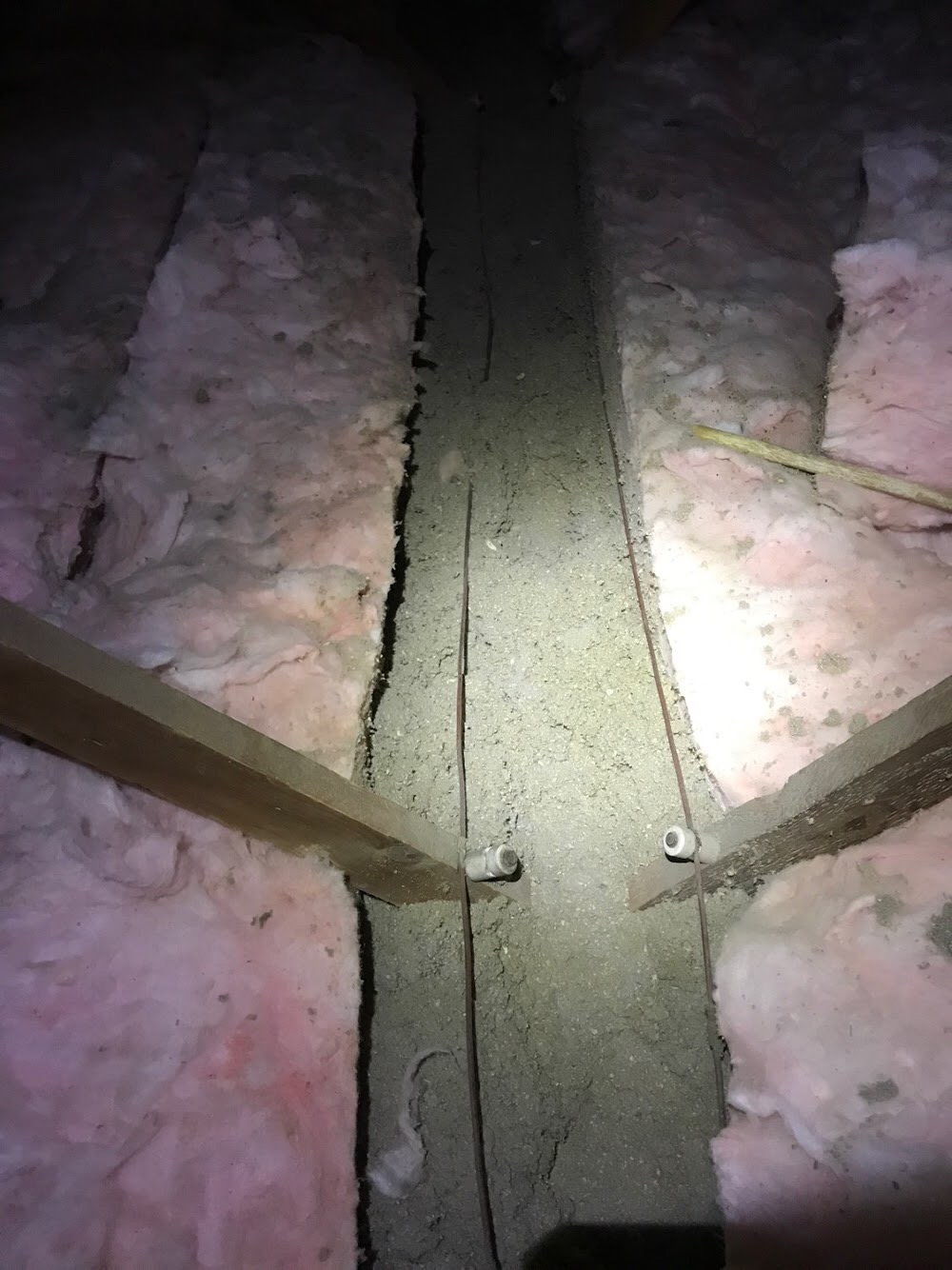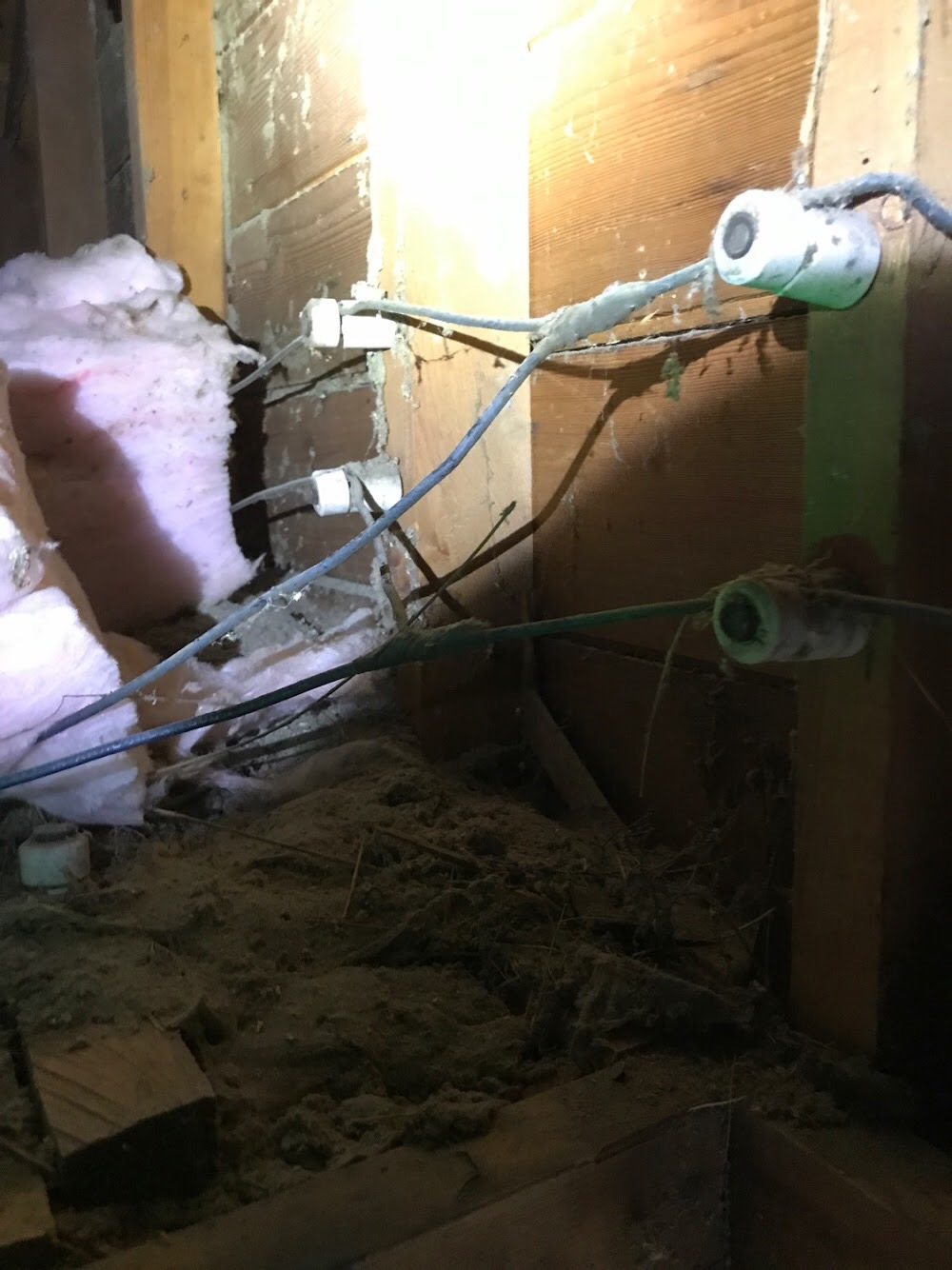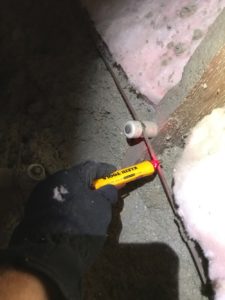 What is Knob and Tube Wiring?
What is Knob and Tube Wiring?
Knob and Tube Wiring (K&T) was in common use in North America from about 1880 until the 1930’s. You may even see it in a home as late as the 1970’s. Knob and Tube Wiring is a single-insulated copper conductor passing through joists and studs, inside of a porcelain-insulated tube. It is supported at various junction points by ceramic knobs and secured by tie wires. Sometimes a ceramic cleat (a block shaped piece) was used. Ceramic bushings were also used where a wire would enter a metal device box. When the wire entered a device enclosure, a woven flexible insulating sleeve, or loom was slipped over insulated wire for added protection. Wiring devices such as light switches, outlets and light sockets were either surface mounted, suspended or flush mounted using a metal box.
Is Knob and Tube Wiring Used in the Boise Area?
We do occasionally find active Knob and Tube wiring still in use in some older Boise homes. A lot of older homes in the Treasure Valley have Knob and Tube wiring distributed through the home, but it is not being used anymore. Other homes have K&T wiring used in some parts of the home, but not in others. If an older home has had the electrical system updated, it's important to ensure that it was done by a licensed electrician as some of the dangers of Knob and Tube wiring come from it being incorrectly spliced together with newer wiring systems.
What would it cost to replace my Knob and Tube Wiring?
The average cost to replace Knob and Tube Wiring is about $7,000 for a 2 story home. It can run as high as $9,000, and will increase about $2,000 for each additional story.
Should I replace my K&T wiring?
Many people want to know why they should replace Knob and Tube wiring in their home, and if it is it necessary to replace all of it? Here are the main reasons you will want to replace K&T and why you would not want to use any of it:
- The older type insulation used in K&T wiring is made from rubber and will disintegrate over time.
- Older wires such as K&T may not be large enough in diameter to handle the amps of today's electrical service and distribution. Too much current flowing through this wiring can lead to brittle insulation, exposing bare wire, which can be the cause of fire or shock.
- There is no ground wire in a K&T system (you will see only 2 prong receptacles). This means there is no protection against faults, which can lead to shocks or fires.
- Some insurance companies will not insure a home with K&T wiring.
- If you are selling your home with K&T, the buyer will need to replace it; making your home more of a challenge to sell. If you are buying a home, you will want to be sure it has up to date wiring.

